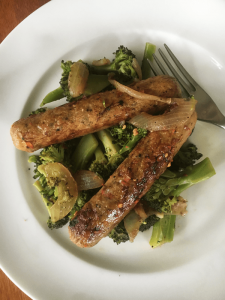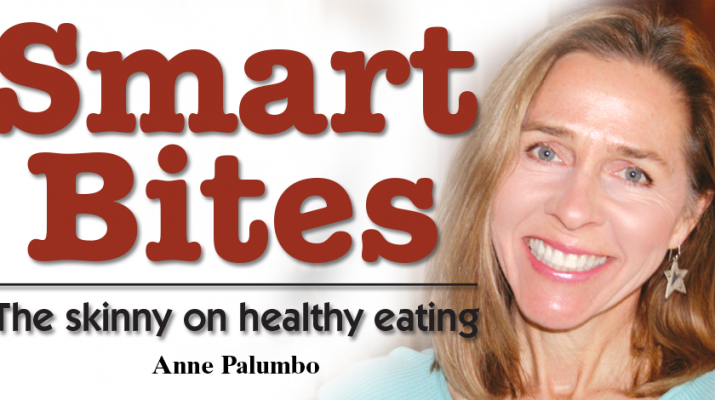 Our nation’s Italian sausage consumption skyrockets during summer months — who can blame us? The irresistible aroma of sizzling sausage sends our taste buds into overdrive! Fan the flame with some peppers and onions, and it’s no wonder many of us indulge in seconds and thirds.
Our nation’s Italian sausage consumption skyrockets during summer months — who can blame us? The irresistible aroma of sizzling sausage sends our taste buds into overdrive! Fan the flame with some peppers and onions, and it’s no wonder many of us indulge in seconds and thirds.
But as tasty as Italian sausage is — and for reasons easily imagined — it’s not the best food to eat on a regular basis. Occasionally? Yes. Daily? No.
So what makes Italian sausage a “sometimes” food versus an everyday staple? In a word, most sausage tends to run fairly high in fat, calories, and sodium; most are no slouch in the cholesterol department; and, all are a processed food.
Although nutritional stats vary widely for Italian sausage, a typical link of Italian pork sausage has around 200 calories, 16 grams of total fat (of which six are saturated), 50 grams of cholesterol, and 550 mg of sodium.
Of course, depending on your eating habits, you may need to double (or triple) those stats. Gulp!
Overconsumption of any one of the above — from the calories to the fat, the cholesterol to the sodium — can lead to serious health issues, including obesity, heart disease, diabetes and cancer.
Another good reason to rein in consumption: Italian sausage is classified as a “processed meat,” meaning it’s been preserved by smoking, salting, curing or adding other preservatives.
According to the American Institute for Cancer Research, any amount of processed meat eaten regularly increases the risk of both stomach and colorectal cancers. It’s why the AICR and other health organizations recommend limited consumption of processed meats like sausage, hot dogs, bacon and deli meat.
On the plus side, Italian sausage is an excellent source of complete protein and some B vitamins (especially B12). An essential nutrient for building and maintaining tissues and cells, protein also makes up the enzymes that power many chemical reactions in our body. The B vitamins play a key role in converting food to energy and in supporting nervous system function and red blood cell formation.
 Those monitoring carbs will be thrilled to know that Italian sausage has next to none!
Those monitoring carbs will be thrilled to know that Italian sausage has next to none!
So, can Italian sausage be part of a healthy diet?
On average and with limited consumption: yes. But for those battling health issues that may be exacerbated by eating processed meat, probably not. If you’re unsure, seek a doctor’s advice.
Although my husband and I love the succulent flavor of pork sausage, we don’t love the calories, fat, and sodium and have since switched to poultry Italian sausage, shaving off half the calories, over half the fat and a modest amount of sodium. Served alongside sautéed veggies, it’s a delicious “sometime” meal.
Braised Italian Sausage with Broccoli, Garlic, and Lemon
5-6 Italian sausage links (recommend: Trader Joe’s Italian Style Chicken Sausage)
2 tablespoons olive oil, divided
1 medium yellow onion, cut into ½-inch wedges
2 cloves garlic, minced
1 teaspoon ground coriander
¼ teaspoon red pepper flakes
3 crowns broccoli, cut into 2-inch long florets with florets then halved or quartered
2 cups water
2 tablespoons lemon juiceSalt and pepper
Preheat oven to 200 degrees.
Place sausages in large skillet: drizzle with 1 tablespoon olive oil; add ½ inch water. Over medium-high heat, boil sausages to cook through. Once water cooks away (about 8-10 minutes), lower heat to medium and brown sausage in remaining oil. Remove from heat; transfer to foil-lined baking sheet; place in oven to keep warm.
In same skillet, heat remaining olive oil over medium-high. Add onion and sauté until golden, about 6 minutes, lowering heat if needed. Add garlic, coriander, and red pepper flakes and cook for 30 seconds. Add prepared broccoli and 2 cups water; stir well. Bring to a boil, then reduce heat and cover. Cook until fork-tender, about 8 minutes, stirring throughout. Mix in lemon juice; season with salt and pepper. Serve sausages atop broccoli mixture.
Helpful tips
Read Italian sausage labels carefully. Keep in mind that claims like “natural” or “uncured” or “nitrate- and nitrite-free” do not necessarily mean the food is healthier. Some products cured with sea salt or juices such as celery juice that contain naturally occurring nitrates may end up with just as high nitrite content as meats with sodium nitrite added. Choose lower-temperature methods of cooking—such as roasting or braising—to thwart the “grilled char” that can develop harmful carcinogens.
Anne Palumbo is a lifestyle columnist, food guru, and seasoned cook, who has perfected the art of preparing nutritious, calorie-conscious dishes. She is hungry for your questions and comments about SmartBites, so be in touch with Anne at avpalumbo@aol.com.

